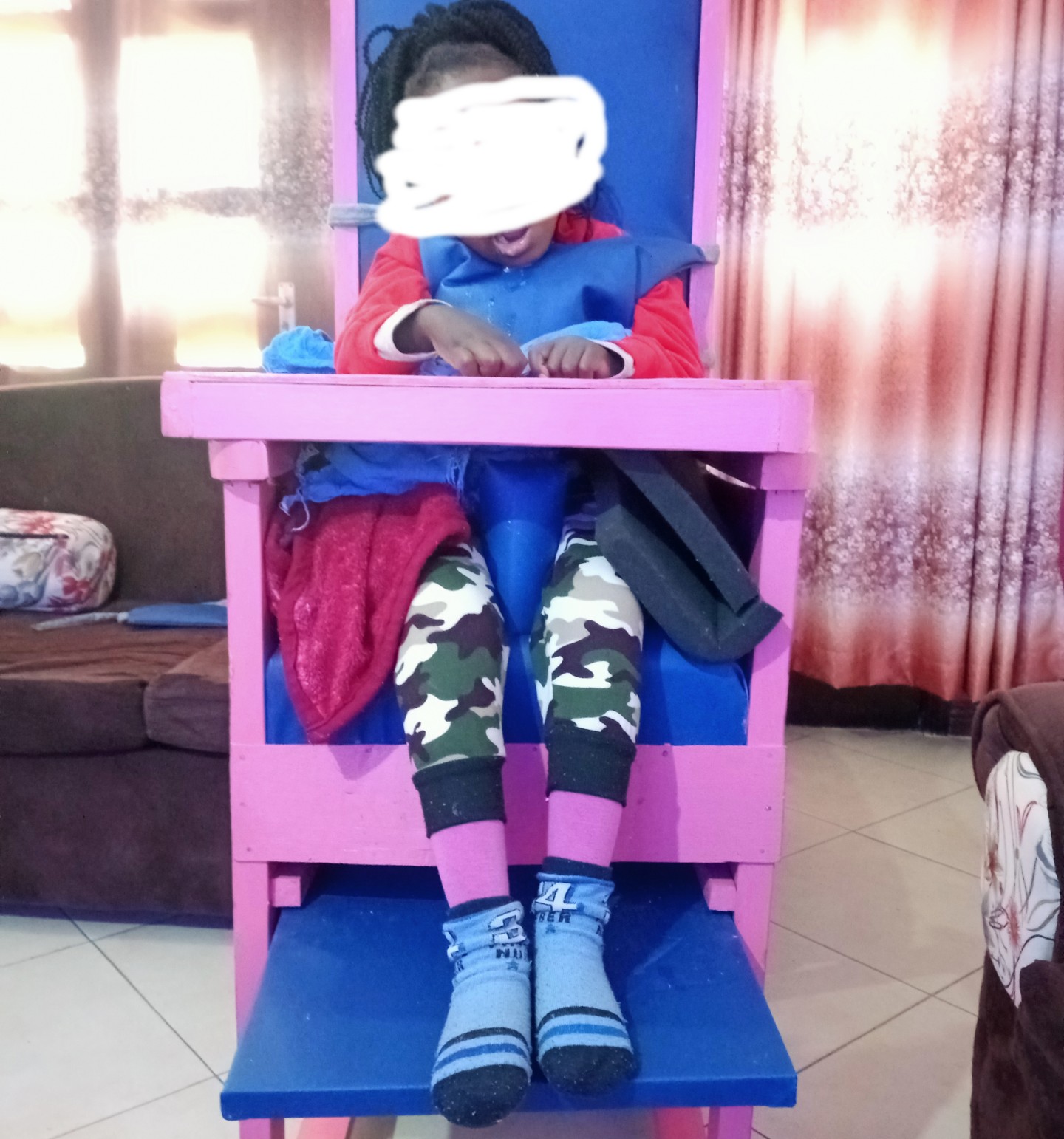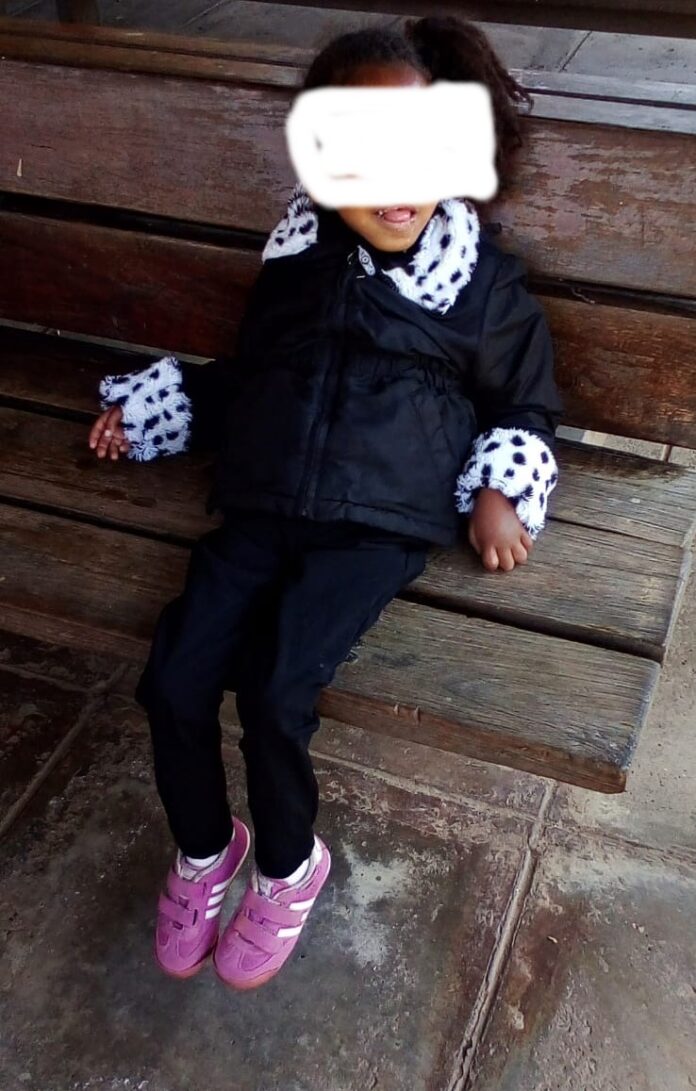By Scovian Lillian
Nakuru County, Kenya: Thirty-five-year-old Gladys Kinyua has a beautiful smiley baby girl aged six. The jovial Baby Milan Wanjiru beams with radiance and it’s hard to tell that she has cerebral palsy at a glance.
Baby Millan loves the company of her family and lights up when she sees other children. She also loves watching TV (cartoons) and she feels any negative energy projected toward her.
“Her muscles get stiff when she is lonely. She doesn’t like being ignored and tries to play with her hands when she sees other children. I take her out to other children to make her feel like a child. Children love her and they always tell her that she’s beautiful,” said Kinyua in an interview.
Kinyua, a resident of Nakuru County in the Rift Valley region of Kenya, is a journalist who is bringing up her daughter despite the challenges that children with special needs face every day.
Millan was born healthy and made great milestones in her growth, but things changed when she clocked for nine months. All of a sudden, she frequently fell ill and trips in and out of the hospital became the norm. Her mother vividly remembers one dreadful Wednesday that changed everything.
“I was outside airing clothes when I heard a cry of distress. It was so loud that my heart beat so fast! I ran back inside the house to see what was happening. When I got in, my baby was crying and in shock and she convulsed. I rushed her to the hospital and when I got there she was placed on oxygen. She was unconscious and helpless and went into a coma,” Kinyua narrated.
Doctors couldn’t tell what was ailing her. They transferred Baby Millan to Kijabe Mission Hospital for advanced treatment. At Kijabe, doctors ordered diagnostic scans, but they still couldn’t tell the cause of the child’s ailment. They stabilized and discharged her, but that wasn’t the end of her health woes. Baby Milan became even sicker and was admitted to the hospital every fortnight.

After weeks of hospital admissions, a friend suggested a second opinion at a hospital offering specialist services and Kinyua heeded the advice. She took her daughter to the Moi Teaching and Referral Hospital in Eldoret.
It was there that a paediatrician disclosed that MRI scan results showed that the child fell and developed brain trauma. Kinyua was shocked; she had no idea that her daughter had fallen, but the house help who was minding the baby at the time of the fall did. However, she did not bother to tell Milan’s mother about the fall. The house help had since left employment, and Kinyua called her to ask about the fall.
“When I called her, she told me that the baby fell and didn’t cry, so she thought Millan was okay,” said Kinyua.
The MRI scan showed a shrunken brain surrounded by fluids, indicating severe brain damage. The doctors told her there was no cure, but recommended surgery to drain the fluid.
Kinyua had a hard time accepting the tough reality that her daughter’s life had changed for good. The news sent her into depression and she thought of taking her life and the life of her child. However, the doctors counseled her and convinced her that surgery was the best course of action.
“That was the best decision I made. The doctors drained the fluid and although Milan is not fully okay, they told me there was a five percent chance of her doing better than if she had not gotten the surgery,” she said.
Joyce Wairimu, 36, also has a child with cerebral palsy and is a resident of Nakuru County just like Kinyua. Her firstborn eight-year-old Purity Wambui was diagnosed with cerebral palsy during infancy when she began convulsing.
“The journey has been tough with ups and downs, but I can’t give up. Accepting her condition was not easy, but the moment I accepted the reality was my turning point because it prepared me psychologically to take good care of her as a child with special needs,” said the mother of three.
Just like Baby Millan, Wambui cherishes the company of family members and other children.
“When I have differences with my husband she convulses. She can sense negative energy,” said Wairimu in an interview.
The two parents joined a Whatsapp group called Tough Cerebral Palsy Caregivers to get and offer support in the journey of bringing up their children. The group is one of three disability groups and has 265 members from across the country.
Laja Kokoyo, a child development specialist who runs a clinic in Nairobi, defines cerebral palsy as an umbrella term used to describe a brain injury. He says that there are different types of cerebral palsy and they include: spastic, hypotonic, ataxic, mixed, and athetoid cerebral palsy. Each type has its own set of symptoms, but some children may have symptoms from more than one cerebral palsy if they sustained widespread brain damage.
“Most cases are congenital, (happen at birth) but some are acquired, for instance in the case of a fall, if the impact was too much such that it leads to internal bleeding. The bleeding may cause blood spillage on brain cells and that would destroy the different injured parts as the brain has different parts for specific functions. The cells in the highly impacted area after a fall could be diminished or completely lost causing cerebral palsy,” Kokoyo clarified.
He added that if the most affected area of the brain is the area for speech, the child develops slow speech. If it’s the motor cortex then the baby loses mobility and speed. Congenital cases happen during delivery and are caused by either prolonged labour or when a child has a high birth weight — 3.5 kilogrammes and above.
“The baby gets tired during prolonged labour and when oxygen supply is limited due to a condition called asphyxia, it causes pressure to the brain cells causing a child to be born with cerebral palsy,” explained Kokoyo.
He added that the condition can be diagnosed two months after birth, but for cases where children begin to convulse right away as infants; there could have been severe asphyxia.
Kokoyo said that cerebral palsy damage is permanent but not progressive and medical intervention varies based on the type of damage. He explained that there is corrective intervention through physiotherapy, compensatory intervention through supportive devices, assistive technology like wheelchairs and finally giving peace and comfort in severe cases such as spastic cerebral palsy.
On October 6th this year, Kenya joined the world to mark World Cerebral Palsy Day. Statistics by the National Council for Persons with Disabilities in Kenya show 2824 registered persons with cerebral palsy below the age of eighteen with no definite data collected about children with cerebral palsy in Kenya. The figure is expected to be updated.
According to Centers for Disease Control and Prevention (CDC) recent population-based studies from around the world report prevalence estimates of cerebral palsy ranging from 1 to nearly 4 per 1,000 live births or per 1,000 children. In some parts of the world, however, there is evidence that the prevalence of cerebral palsy has declined, particularly for children born at moderately or very low birth weight.
A paper published in July this year in the African Journal of Disability found that many barriers exist in the care of children with disabilities in East Africa especially children with cerebral palsy. Some of the barriers include stigma and a lack of human and infrastructural resources.
In addition, significant disparities exist in access to medication and specialist care. The International Classification of Functioning, Disability, and Health framework needs to be translated to clinical practice in East Africa, with due recognition of the importance of family-centered care and emphasis on the life course theory of disability care.
“Family-centred care, educational initiatives, advocacy on the part of stakeholders, and involvement of government policymakers are important avenues to improve outcomes,” notes the paper.
To champion equal health rights especially medical care for children with cerebral palsy, Kinyua urged national and county health facilities to make treatment affordable especially therapy sessions as children with special needs need many of those sessions. This is especially true for children who convulse daily. She also called for more affordable diapers especially after the children grow and transition to adulthood.
“Adult diapers are more expensive. Education for these children should also be affordable as per the Special Needs Education Policy. Currently, one can only get a quality education for them at private schools yet those schools are few and very expensive,” she said.
Wairimu on the other hand appealed to chiefs and community health workers to mobilize and sensitize mothers in rural areas to fully embrace children with cerebral palsy without hiding them or feeling ashamed of them.














